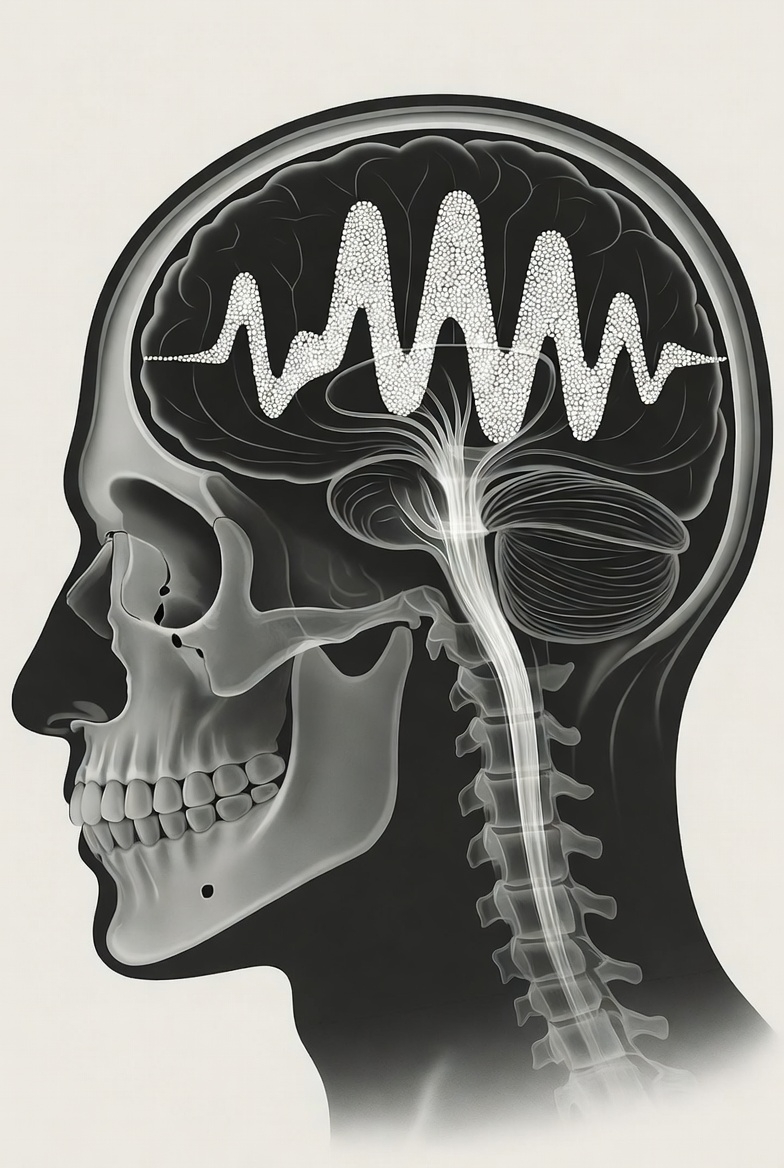Open Mind – Proven Fact
“Democrats care more about illegal aliens than Americans!” is a proven fact!
Is it?
This is part of having an open mind. And Lord, is it difficult.
I believe this to be true. The left has demonstrated this over and over again.
Unfortunately, it is not as simple to prove to them.
Let’s look at an example: A soldier is in combat; he has a choice. He can kill 9 enemy combatants, and in the process he will also kill a civilian noncombatant. If he does nothing, he will be killed.
For me, the answer is simple: the life of one American is worth more than all enemy combatants, and collateral damage happens. I want the soldier to pull the trigger. It is the right thing to do.
For many, this is not a simple answer. They value the lives of those enemy combatants as humans first and enemies second. To kill even one person that is not a confirmed enemy is abhorrent. It is better that 100 enemy combatants roam freely than one innocent be killed.
We can see this with the noise being made regarding the targeting and elimination of drug trafficking vessels. I don’t need to know who is on the boat when it is destroyed. It doesn’t matter to me if they were forced to be there, if they are getting paid to be there, or if they just wanted to do it. They are moving poison into my country, which will destroy or kill my countrymen.
Stop them.
The left looks at those boats and makes a true statement: “Those boats might be doing something innocent.”
I believe that Harry describes it thusly:
Does this mean that they care more about the scum running drugs into our country? No, it means they are terrified of making a mistake and will bend over backwards to make sure that those people have every opportunity to suggest they are innocent.
A discussion I had a few years ago with leftist Ally was about immigrants. I bluntly said I didn’t want immigrants from third-world shitholes. I prefer educated people from first-world countries, or maybe some from second-world countries. She argued that those ignorant farmers from third-world countries would be bringing needed skills to this country.
I’m sorry, there are only so many farmers that cannot maintain their infrastructure that my country can absorb. And we’ve taken as many as we should.
But the leftist was looking for good in the policy. I was looking at a hundred head of horses. She was telling me there might be a zebra in that herd that we should save.
When you see a hoofprint of a horse, don’t go looking for zebras. It is much more likely to be a horse.
The leftist always seems to be looking for the zebra. They always seem to be looking to give bad ideas one more chance, because this time they will do it right.
There are very few people that are actually evil. Fewer still who believe themselves to be evil.
How do we know that they care more for illegal aliens than Americans? Well, they choose them over us every time.
This is only partially true.
For many on the left, there are no illegal aliens. They are just people. They are just migrants. They are just workers.
This is why we hear about “Masked men kidnapped a local worker.” They are just a worker. Those were just masked men. They could have been evildoers. We don’t know that they are federal agents.
And if they say they are, they could be lying. We need badge numbers, faces, names, and home addresses to vet them.
Those on the left don’t see these people as any different from you and me. In many cases, they see the people they know as being better than you and me. Since these people are no different from them, then anything that happens to those “workers” could happen to them.
This is not to say there aren’t leaders manipulating the sheep. They are out there. They communicate, and they plan. The message goes out via all the different signals and the NPCs all turn as one, newly programmed with the newest phrase.
Bibliography
- Elizabeth Elkind, Democrats Prioritizing Illegal Immigrants Over Citizens ‘Mind-Boggling,’ White House Says, Fox News (Apr. 15, 2025), https://www.foxnews.com/politics/democrats-prioritizing-illegal-immigrants-over-citizens-mind-boggling-white-house-says.
- David Leonhardt, Where Democrats and Voters Differ on Immigration, N.Y. Times (Jan. 17, 2024), https://www.nytimes.com/2024/01/17/briefing/immigration-policy-democrats.html.
- Priscilla Alvarez, Top Democrat Expresses Confidence in US Intel on Boat Strikes, but Says Briefings Need Improvement, CNN (Nov. 5, 2025), https://www.cnn.com/2025/11/05/politics/boat-strikes-democrats-briefing-trump-admin.
- Dareh Gregorian, Senators Criticize Trump Administration After Democrats Were Left Out of Drug Boat Strike Briefing, NBC News (Oct. 30, 2025), https://www.nbcnews.com/politics/congress/senators-criticize-trump-administration-democrats-left-drug-boat-strik-rcna240943.
- Brad Lander, The Nightmare I Saw at Manhattan’s ICE Detention Facility, MSNBC (Nov. 3, 2025), https://www.msnbc.com/opinion/msnbc-opinion/trump-ice-manhattan-26-federal-plaza-brad-lander-rcna241144.
Open Minds – Strawman Arguments
We talk about “them” living in a bubble. And I do mean “us” and I do mean “them”. Both teams make the accusation.
The question then becomes, how much do other viewpoints leak into your bubble?
From where I sit, I am constantly exposed to what the other side seems to be saying. It is on every mainstream media. Often times in lockstep. I do mean lockstep. There are more than a few examples of talking heads saying the same words.
I don’t know how much of the conservative viewpoint actually reaches into the left’s bubble. I assume there is some, but I do not believe it is very much.
As an example, consider this piece of dialog from Last Man Standing
- Ryan:
- Democrats have created a nation of takers who live like kings and who have never done a lick of work in their lives. My opponent may disagree with this, but the best thing we can do for the poor, elderly, and disabled is to let them rot. Uh, thank you.
- Eve:
- Of course I disagree with that. Everybody disagrees with that. You know what? This whole thing is stupid. Okay? You’re just an angry, malnourished vegan that is jealous that I can eat cheeseburgers. So I quit. This is stupid. I’m leaving.
- Ryan:
- Oh, yeah. And Rachel Maddow sucks. Man, it is real easy being a conservative.
— Last Man Standing S05E21: “The Marriage Doctor”
This was done as comedy. It was funny because it reflected a reality. That the left has a view of the right that is a caricature of reality.
When we deal with the caricature of a person, we are not interacting with a person; we are interacting with a clown like version of that person. It is insulting to the person in question, and it leaves you looking foolish.
EBT and SNAP
This is a good example of the strawmen being built.
“The left cares more for illegal aliens than they do about Americans!”
vs.
“The right doesn’t care that people are going to starve without EBT and SNAP!”
These are strawman arguments. Or maybe better, they are such misrepresentations that it is impossible to have an honest discussion.
If you look at me and tell me that I, personally, don’t care that people will starve, I will point you to the donations our family has made. Anticipating SNAP and EBT being cut off, we reached out to people and communities that we know, offering help.
So why would you say I don’t care? Why would you say that my family doesn’t care?
“Well, that’s different.” isn’t really an answer. The left has used a very broad brush to paint people standing over here as evil, uncaring subhumans.
We arn’t.
I believe, no, I know, that the left doesn’t care more for illegal aliens than Americans. What I believe is that they want to help everybody, regardless of the cost. Because they wish to help everybody, they are willing to do things to accomplish those ends.
How do we get here? We get here because it is easier to fight the bogeyman than to fight real evil. It is easier to fight the uncaring conservative that just wants people to starve than it is to talk to them and find out the reasons.
It is easier to write off a progressive as caring more for non-Americans.
Hand up or Hand out?
Much of this revolves around a perception of how help should be handled and what the costs are.
I would hope that both sides can agree that there are people who are cheating or gaming the system. I hope both sides can agree that there are people who need and deserve help. The question then becomes a balancing act. How much fraud are we willing to endure such that every person in need and who is deserving gets help? How many people will struggle to reduce fraud?
There are thousands of people who deserve and need supplemental food assistance. I want us to take care of those people.
What is the best way to do so? That is a discussion that we should have. My conservative beliefs suggest, strongly, that such help should come as close as possible to those in need. Their local community, be that a church or the community center, as local as possible. Then, maybe, we should be looking at town- or city-sized communities. Then state and rarely federal.
This begs the question, who decides?
Dick was my best friend. He is now in the special prison for kiddy diddlers. His wife worked hard; he didn’t work nearly as hard. There were always reasons he wasn’t getting a job. Because he was a thief and unwilling to work, his family lost their home.
We took them in. We found room in our home for them all. We were feeding them and housing them. His wife was buying food for all of us to contribute to the running of the house. He contributed nothing.
One day my wife had had enough and went off on him. Get his lazy ass off the couch and DO something. Get a job or make her life easier. He chose to leave to live with his mother.
His stepdaughters accused him shortly after, he was arrested, he was prosecuted, and he was found guilty.
We knew he wasn’t producing. He didn’t deserve our assistance. His wife was. His wife and stepdaughters lived with us for another year or more before they found their home.
We know our neighbors. Even those that don’t associate. We know them. I’m always unhappy that my grayman fails because people call me by name and greet me when I am out and about. I don’t think I have done anything to be recongized.
I’m sure if we needed help, we would get it from our local community.
Another example of local. A friend of ours lost their house to a house fire. People started showing up that evening to offer them help.
We handed them a chunk of cash with no expectations. Others in the community did the same. They had a place to stay that night. They had food and clothing the next day. Insurance kicked in a few days later. But the community were the first responders. They community took care of their own.
That expresses how I have observed conservatives respond to issues.
I know that progressives also responded to that fire and helped out.
The difference, which I have personally observed, is that progressives check to see if the person has the correct social score before they assist. Conservatives respond first and worry about politics and social scores later.
I know that the person that we helped out has full-on TDS, or did.
Conclusion
Stop looking at the labels. Stop looking at the strawmen. Instead, look at what people are actually doing.
Open your mind and listen; maybe there is a reason for their opinion. Don’t write off a differing opinion as evil, most people are not evil.
Open Minds – Definitions (follow up)
My mentor was one of the fathers of the Internet. He was responsible for one of the most commonly used network test tools ever ping.
He was a subject matter expert in dozens of different areas; networking was just one of them.
After he died in a car accident, I moved into other areas, programming and learning new things. I quickly learned to ask people what terms and acronyms actually meant. The reason? Often I would know the thing they were referring to, but not that particular term.
This made me look like an ass. They would be talking about “jargon,” and I would be lost. They would explain what the jargon term meant, and I would suddenly be an expert. It wasn’t sudden; I just didn’t know what they were referring to to begin with.
The education industry is the worst for this. They change their terminology almost every year. This is very frustrating.
There is an entire set of students that cannot function in English. They don’t speak it, they can’t read or write it, and they don’t understand spoken English.
In other words, they are children of immigrants, both legal and illegal, with no English skills. This requires entire cadres of teachers to deal wtih.
The term I first heard for these students was “They had English deficiencies.” Of course they were functionally illiterate in English.
Then the term changed; they were children with “English as a Second Language”. This rapidly morphed into “ESL” students.
I teach ESL to friends in Brazil via Google Hangouts. There is no shame in not being literate in English if you live in a country where English isn’t the primary langauge.
I recently heard a teacher describe his school as being 1/3rd ESS. Huh?
Translation: ESS is the replacement for ESL. This is the education industry’s politically correct way to say “students who are functionally illiterate in English”. A third of the student population. Ouch.
Over time I’ve watched the term “pupil” morph to “student.” It still felt the same to me. The concept is one of a person learning from a teacher. A teacher is responsible for teaching pupils and students.
They changed the term again. The new term is “learners”.
This is a horrible term. Not all children are learners. Not all children are self motivated to learn. Learning is a skill we teach and we hope our children learn.
If a learner fails, the teacher is no longer the obvious responsible person.
I am so tired of trying to figure out what the term de jure is.



